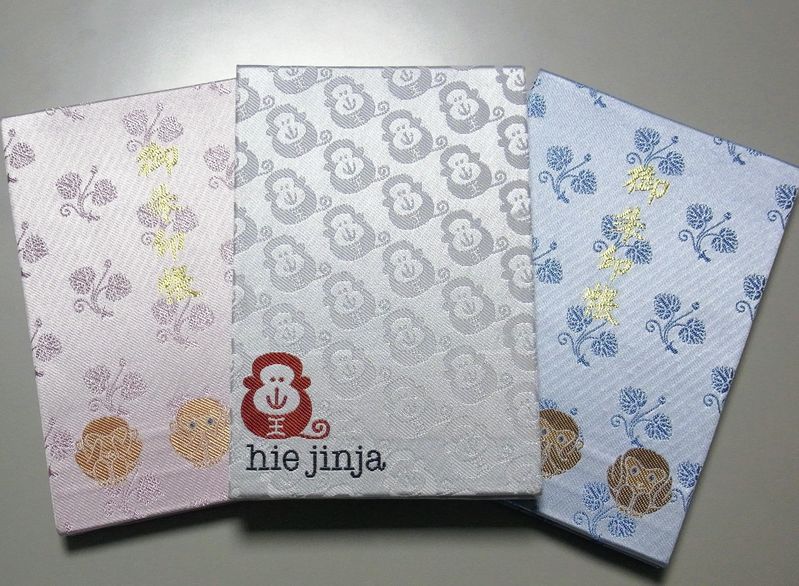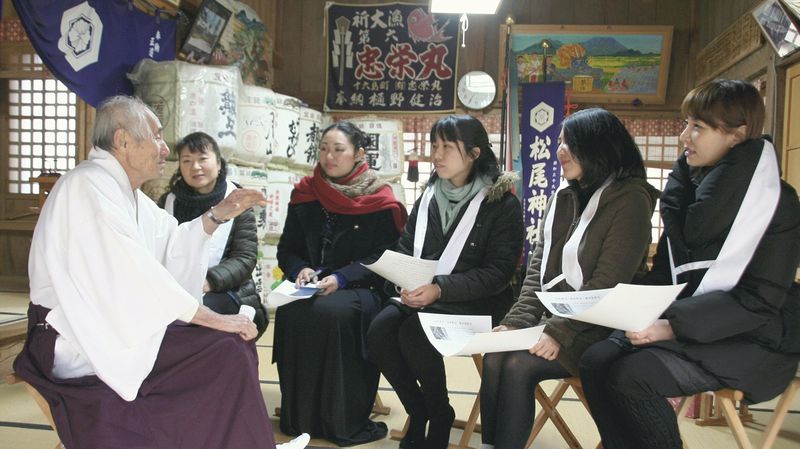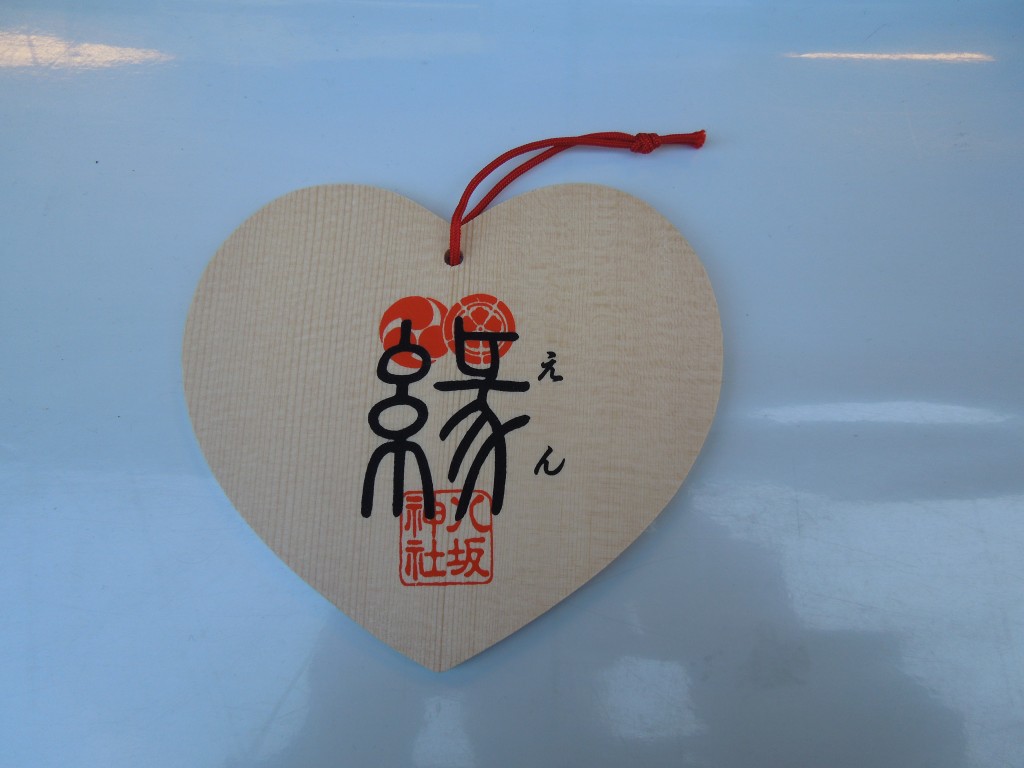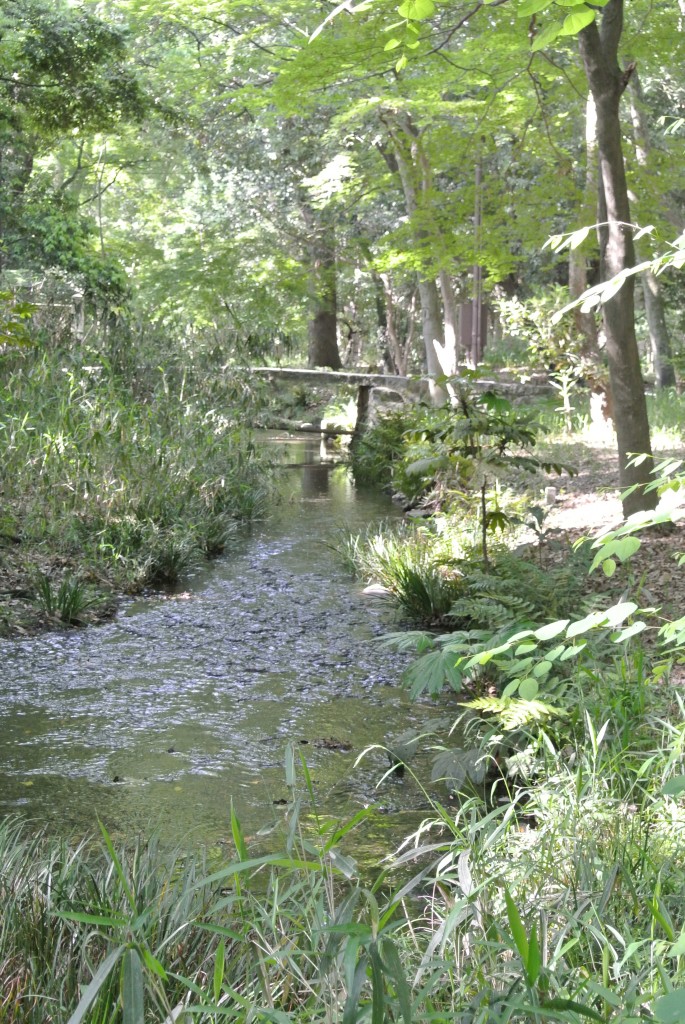The Japan News carried yesterday an article on shrine visits by Japanese females from its parent paper, The Yomiuri Shimbun. It’s about the popularity of young women visiting shrines ~ a phenomenon that anyone will be aware of who has ever visited a shrine known for enmusubi (love connections). Izumo Taisha, incidentally, has the biggest enmusubi reputation in Japan, which may just explain why it features in the article so strongly…
******************************************************************

Illustrations of cute monkeys are printed on goshuin-cho notebooks from Tokyo’s Hie Shrine. (photo copyright Yomiuri Shimbun)
‘Shrine girls’ on the increase The Yomiuri Shimbun January 1, 2014
Visiting shrines has become popular among young women recently, apparently because sengu, or rare events of reconstruction or repair of facilities at major shrines, were carried out last year at the Ise Grand Shrines in Ise, Mie Prefecture, and Izumo Taisha grand shrines in Izumo, Shimane Prefecture.
A 33-year-old company employee in Tokyo’s Shibuya Ward said, “Recently, visiting shrines has become my hobby.”
She visited Hikawa Shrine in Saitama’s Omiya Ward with a female friend in late December. “We visited the shrine after we learned on the Internet that it has an approach about two kilometers long lined with keyaki zelkova trees,” she said.
The woman became interested in shrines through reading women’s magazines and watching TV programs that featured the sengu events of the Ise and Izumo grand shrines. “I think oral traditions about gods are interesting. When I go to a shrine, I draw a paper fortune or buy a cute omamori lucky charm,” she said.

Members of Jinja Garuzu Kenkyukai listen to a priest talk about the history of Saka Shrine in Izumo, Shimane Prefecture. (copyright Yomiuri Shimbun)
Shrine girls study society
Women’s clubs that focus on visiting shrines have been organized. Jinja Garuzu Kenkyukai (Shrine girls’ study society), launched two years ago, has about 50 female members in their 20s to 60s in Shimane and Tottori prefectures. Its members’ occupations are varied, including homemakers and restaurant workers. Members visit shrines in the Sanin region once a month or so.
Michi Kono, 36, a freelance announcer who founded the circle, said: “It’s easier to ask questions about a shrine’s festival or other events to a priest in a group rather than when visiting as an individual. It’s also enjoyable to have a meal together, talking about our impressions after visiting shrines.”
Commercial excursions to shrines have also found a following. Hato Bus Co., a major sightseeing bus tour firm, started a ladies-only tour of Hakone and Kuzuryu shrines in Kanagawa Prefecture in February 2012. The tour is limited to about 40 people, but each tour almost reaches capacity. Many participants are in their 20s and 30s, according to the Tokyo-based bus company.
When Rakuten Travel, which runs a travel website, checked the reservation status of domestic trips during the New Year’s holidays from Dec. 28 through Jan. 5, Izumo Taisha was the most popular destination for women’s groups. The number of female visitors to the shrine more than doubled from the same period a year earlier, according to Rakuten Travel.

Shrines make a point of appealing to Japanese females' sense of cuteness
Hie Shrine in Tokyo created some new goshuin-cho notebooks, mainly targeting female visitors with illustrations of cute monkeys. A goshuin-cho is a notebook for collecting red seals (goshuin) from shrines as proof of having visited.
Shrine expert Akiko Misu, author of Kawaii Goshuin Meguri (Tours of cute goshuin seals), said: “Goshuin really vary from one shrine to another. A collection of goshuin seals will spark good memories of the visits when you check them later.”
“You can feel relaxed when you visit shrines, as many have spacious areas and a lot of greenery. Shrines have been drawing attention as healing places apart from everyday life,” added Misu, 38.

Some of the greenery at Kyoto's popular Shimogamo Jinja, where an emusubi shrine has been beautified in recent years and a tea pavilion for visitors provided in the woods

Dear John-san,
I will organize the Oomoto Workshop in Kameoka and Ayabe from January 29th to February 5th. If you have a time and interest in the program, please join it. Your short term participation is no problem. But during the program, you will attend the Oomoto Setsubun Grand Festival on February 3rd in Ayabe-city. It is the most magnificent ceremony in Oomoto. It starts at 7 pm on Feb. 3rd to 3 am next day. I hope you will enjoy the festival.
Best regards,
Kimura